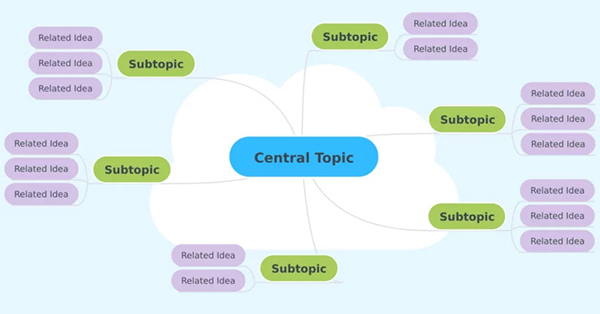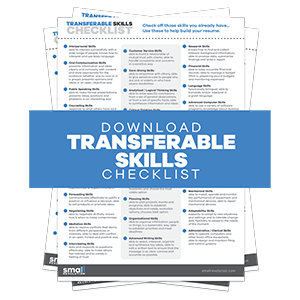Brainstorming is a problem solving and planning process tool for teams and creative individuals. It’s a widespread technique that yields spectacular results and ideas.
Employees and freelancers use these sessions as the perfect opportunity to experiment with wild, out-of-the-box ideas. Team leaders refine the unconventional ideas collected from the brainstorming session afterwards.
Alex Osborn, the inventor of brainstorming, once said, “It is easier to tone down a wild idea than to think up a new one.”
Group brainstorming may be the norm. Still, research published in the European Journal of Social Psychology showed that brainstorming by oneself generates better results than brainstorming in a group.
Groups don’t always follow the strict rules of brainstorming. Members pay so much attention to what others are saying that they fail to generate their own ideas. And others forget the ideas they had while waiting for their turn to speak.
On the other hand, when you’re brainstorming on your own, they are no egos or opinions in the way of your creative process.
An idea you may not feel confident to share in a room of people can develop into something phenomenal when you pursue it on your own.
The Rules of Brainstorming and Why It Matters in 2020
Alex Osborn set four rules to govern his brainstorming sessions. These rules are still applicable to this day:
- Brainstorming is the only place that encourages quantity over quality. The best answers emerge from a mountain of random ideas.
- No idea is a bad idea so never criticize someone else’s viewpoint.
- Go wild. Encourage freewheeling and accept the most outrageous of ideas.
- Lastly, combine ideas from the mountain of ideas generated and improve the points.
Here is why brainstorming is so crucial in 2020:
- Brainstorming looks at a problem from all possible angles.
- Much of brainstorming involves critical thinking so it fosters critical analysis.
- Teams are built when people come together to share ideas.
- Brainstorming gives you fresh perspectives.

The Top Level Mind Mapping Apps of 2020
Here are four of the best mind mapping apps for 2020.
MindManager
Available for Mac OS at $199, and Windows at $349 (iOS and Android platforms launch in 2020).
MindManager is a renowned mind mapping software that is designed to work for individuals and teams.
The software is a powerful tool for individuals to visualize and execute data, tasks, and projects.
The software integrates with the productivity apps and the existing platforms a business relies upon. The 2020 MindManager update features a handy new add-on that allows real-time collaboration.
MindManager simplifies project planning with resource management tools. Data representation functions include upgraded mapping and visualization tools and Excel integrations.
This software is popular with large enterprises that need to streamline their workflow and processes by centralizing their data.
Pros
- It’s a very intuitive software that syncs with all the business interfaces that you are already using.
- The simple layout and ease of use minimize distractions so you can focus on the project.
- Segmenting projects and charts on MindManager gives you the whole picture of how the entire job would look.
- What strikes most about this software is the ease and speed of entering, visualizing, restructuring, and interpreting information.
Cons
- Occasionally, the software will lag and have longer loading times.
- There are multiple ways to illustrate your diagrams. This is generally a good thing, except for the fact that it takes a while to adjust to the information overload.
TheBrain
Available for Mac OS, Windows, Linux, iOS, and Android. The basic edition for personal use is free. The Pro License is $219; the Pro Combo is $299 and renews at $159; the Pro Service is $15 per month or $180 annually.
True to its name, TheBrain mapping software has the astounding ability to process millions of projects. You’ll probably never be quite that busy, but it is worth a mention.
The software has a context-driven visual interface that offers an alternative to the hierarchical file-sharing platforms and linear note-taking apps.
TheBrain is a step ahead of conventional mind mapping software. It explosively reorients the thought display every time a topic is chosen.
Furthermore, TheBrain uses new linking technology and a no-limits network. This enables users to work on an unlimited number of topics and connect and navigate numerous data sources and links.
This software is popular with enterprise-size organizations due to its ability to evaluate complex business and research processes that guide decisions.
Small businesses, Fortune 100 companies, government, and educational institutions find TheBrain an essential tool.
Pros
- Workflow is easily managed with efficient tag management and replacement.
- The user-friendly visual interface makes creating and retrieving content straightforward.
- It is a remarkably unified organizing software that supports multidimensional mind maps and data.
- Unlike conventional mind maps, TheBrain organizes knowledge with links and sections that make navigation fluid.
- TheBrain makes it easy to convert data into information.
- It is designed to model any conceptual space governed by different relationships.
Cons
- You can’t print the information illustrated on the software.
- Your first time using TheBrain can be overwhelming.
InfoRapid KnowledgeBase Builder
Available for Windows Desktop, Mac OS, iOS, Android, and Web. It has a free trial and is available to purchase for $9.99.
The InfoRapid KnowledgeBase Builder is a unique software. Nonetheless, it’s excellent for knowledge management in 3D mode.
It allows you to save text website pages and text documents, and retrieve them with a text search.
Every document that is saved in the InfoRapid KnowledgeBase Builder is organized as a text note attached to a mind map item. From these, you can create a bigger mind map. The mind map is browsable, a feature that tracks all the documents mapped onto it.
An SQLite database manages all the documents saved. You can automatically create mind maps from Wikipedia pages, text documents, and tweets.
You can also export the knowledge base you have created as an HTML document.
InfoRapid KnowledgeBase Builder is best known for its unique software that generates flowcharts automatically from pseudocode.
There is also an option to create the flowcharts manually.
Pros
- The software can manage millions of mapped items without any confusion each time the database grows larger.
- InfoRapid KnowledgeBase Builder steers away from the conventional hierarchical architecture. It can connect the relationship between different items.
- It has an archive that stores documents and images waiting to be imported or attached to items on the map.
- It’s free for personal use.
Cons
- Sometimes the software speeds are sluggish, which can be annoying.
Freemind
Available for Windows, Mac OS, and Linux.
FreeMind is a free, easy to use, open-source software licensed under the provision of the General Public License Version 2.
The Java-run platform is used to create structured diagrams on the main operating systems.
The software is designed to work with quick keyboard shortcuts that make viewing projects straightforward.
The structured view is especially useful in representing concepts, brainstorming, ideas, projects and internet searches.
Freemind is an ideal mind mapping tool for users who run small to medium businesses, and those in the government and education sectors.
These groups of people frequently engage in idea generation, task management, and making presentations, all of which can benefit from Freemind.
Despite its basic layout, Freemind is a powerful tool with an array of features. Some of them include graphical links connecting nodes, file and web links, also for nodes, color options, folding branches, and in-built icons.
Pros
- The keyboard shortcuts make it incredibly user-friendly.
- It’s easy to drag and drop nodes to change the design as it suits your needs.
- It’s easy to export a map item to HTML.
- Editing multi-line nodes is simple.
- The “find” function keeps track of all the details on the map.
- There are no additional costs of licensing to use this software.
Cons
- The visual interface is not very appealing; some users describe it as looking “dated.”
- Some features are not easy to find due to the nested menus.
Get Mapping

Mind mapping boils down to a personal experience. The way your brain works and your main objective will determine the best software for you.
The internet is full of technology to help grow your online career. Take advantage of the free trials that each one offers before you make your decision.
Head over to Small Revolution to take advantage of more productivity methods to grow your skills and business. Greater productivity is just a click away.


